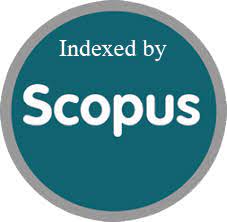An Analysis of Respiratory Function Recovery Dynamics in Vietnamese Athletes from Selected Key Sports Following Submaximal Capacity Exertion
Keywords:
Recovery, respiratory function, key sports, submaximal capacityAbstract
In sports, monitoring respiratory function indicators across different exercise intensity zones and at various time intervals is crucial for accurately evaluating the physiological impact of exercise on an athlete’s body and informing effective training and recovery strategies. This information is essential for tailoring individualized training programs, optimizing athletic performance, and reducing the risk of overtraining. Additionally, monitoring recovery dynamics enables precise assessment of an athlete’s recovery status, supporting informed decisions on training load adjustments and readiness for subsequent exercise sessions. The primary objective of this study is to examine the respiratory function recovery dynamics in Vietnamese athletes from four key sports, athletics, table tennis, shooting, and Pencak Silat following submaximal capacity exertion. By analysing sport-specific physiological responses and recovery patterns, the study aims to contribute valuable insights that can enhance training monitoring and optimize recovery strategies for high-performance athletes in Vietnam. This study recruited a total of 76 athletes, including 49 males and 27 females. All participants were in the professional training phase, classified at Level I or higher, and were actively training at the Sports Training and Competition Centre in Bac Ninh Province, Vietnam. Results revealed that athletes generally demonstrate superior respiratory function compared to non-athletes, primarily due to physiological adaptations resulting from consistent, structured training regimens. A comparison of the four sports examined in this study, athletics, table tennis, shooting, and Pencak Silat revealed distinct differences in respiratory function recovery dynamics before, during, and after submaximal exercise. Athletes from athletics and Pencak Silat exhibited more favourable recovery patterns compared to their counterparts in table tennis and shooting. The current findings align with previous research on respiratory recovery patterns surrounding submaximal exercise. Consistent with earlier studies, this investigation observed an initial stabilization or slight decline in respiratory rate during exercise, followed by a sharp increase immediately post-exertion, and a gradual return to baseline values during the recovery period.
Downloads
Metrics
References
Amann, M., Romer, L. M., Subudhi, A. W., Pegelow, D. F., & Dempsey, J. A. (2007). Severity of arterial hypoxemia affects the relative contributions of peripheral muscle fatigue to exercise performance. Journal of Applied Physiology, 101(4), 119-120. https://doi.org/10.1152/japplphysiol.00259.2007
Bentley, D. J., Newell, J., & Bishop, D. (2007). Incremental exercise test design and analysis: Implications for performance diagnostics in endurance athletes. Sports Medicine, 37(7), 575–586. https://doi.org/10.2165/00007256-200737070-00002
Binder, R. K., Wonisch, M., Corra, U., Cohen-Solal, A., Vanhees, L., Saner, H., & Schmid, J. P. (2008). Methodological approach to the first and second lactate threshold in incremental cardiopulmonary exercise testing. European Journal of Cardiovascular Prevention & Rehabilitation, 15(6), 726–734. https://doi.org/10.1097/HJR.0b013e328304f4c8
Borresen, J., & Lambert, M. I. (2009). The quantification of training load, the training response and the effect on performance. Sports Medicine, 39(9), 779–795. https://doi.org/10.2165/11317780-000000000-00000
Gattinoni, L., Tonetti, T., Quintel, M., & Busana, M. (2020). Principles of mechanical ventilation in the context of COVID-19 and its impact on respiratory recovery. Critical Care, 24(1), 561. https://doi.org/10.1186/s13054-020-03279-0.
Issurin, V. B. (2010). New horizons for the methodology and physiology of training periodization. Sports Medicine, 40(3), 189–206. https://doi.org/10.2165/11319770-000000000-00000
Macfarlane, D. J., & Wong, P. (2012). Validity, reliability and stability of the portable Cortex Metamax 3B gas analysis system. European Journal of Applied Physiology, 112(7), 2539–2547. https://doi.org/10.1007/s00421-011-2235-5
McArdle, W. D., Katch, F. I., & Katch, V. L. (2015). Exercise physiology: Nutrition, energy, and human performance (8th ed.). Wolters Kluwer Health.
Nguyen, T. V., Le, Q. T., & Pham, H. D. (2016). Reference standards for respiratory function in Vietnamese athletes. Vietnam Sports Science Journal, 32(4), 45–52.
Powers, S. K., & Howley, E. T. (2018). Exercise Physiology: Theory and Application to Fitness and Performance (10th ed.). McGraw-Hill Education.
Wilmore, J. H., Costill, D. L., & Kenney, W. L. (2008). Physiology of sport and exercise (4th ed.). Human Kinetics.
Downloads
Published
How to Cite
Issue
Section
License

This work is licensed under a Creative Commons Attribution 4.0 International License.
You are free to:
- Share — copy and redistribute the material in any medium or format
- Adapt — remix, transform, and build upon the material for any purpose, even commercially.
Terms:
- Attribution — You must give appropriate credit, provide a link to the license, and indicate if changes were made. You may do so in any reasonable manner, but not in any way that suggests the licensor endorses you or your use.
- No additional restrictions — You may not apply legal terms or technological measures that legally restrict others from doing anything the license permits.






